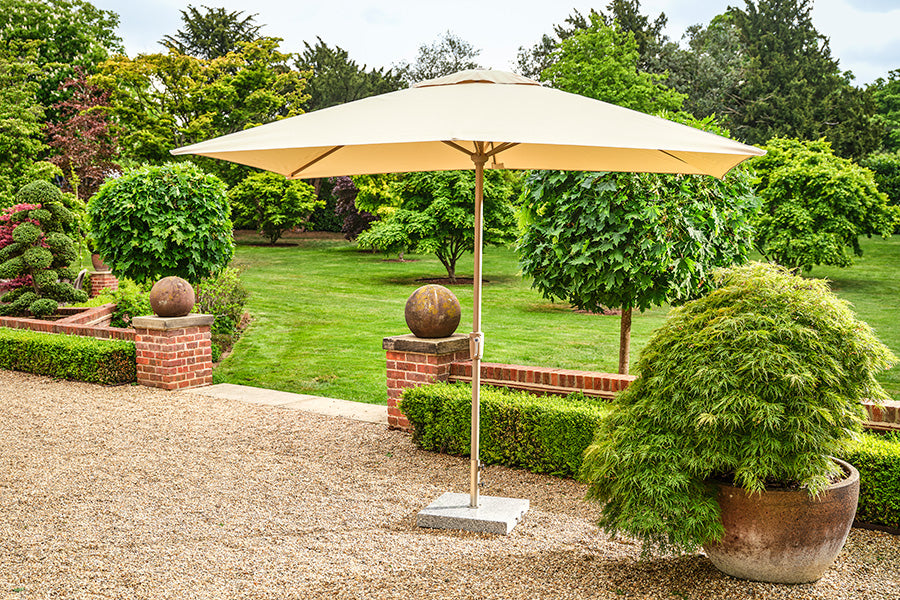A garden parasol is a must-have outdoor accessory that provides both comfort and protection, enabling people to enjoy their time in the garden or on the patio while being shielded from the sun. With the increasing awareness of the harmful effects of ultraviolet (UV) rays, garden parasols have become a practical solution for those looking to protect themselves from sunburns and heat. These outdoor umbrellas are designed to create shaded areas, making outdoor spaces more comfortable during hot summer months. They come in various sizes, designs, and materials, offering a blend of style, functionality, and versatility.

The primary purpose of a garden parasol is to offer shade and shelter. Whether it’s a hot day or simply an afternoon spent outside, the parasol provides a cool retreat under its canopy. By blocking direct sunlight, it creates a comfortable, relaxing environment for people to enjoy meals, read books, or unwind with family and friends. Garden parasols are an excellent way to make outdoor living more enjoyable, as they reduce the risk of heat exhaustion and sunburn, allowing people to stay outdoors for longer periods without discomfort. Moreover, they help keep the surrounding area cooler by creating a shaded zone, which can be especially beneficial on patios or decks exposed to direct sunlight.
When it comes to materials, the quality and durability Garden parasol of the parasol are essential for its long-term functionality. Most high-quality garden parasols are made with robust materials like polyester or acrylic fabric for the canopy, which are not only resistant to fading in the sun but also offer water resistance. This means the parasol can withstand brief rain showers without the fabric becoming damaged. The frame is usually constructed from materials like aluminum, steel, or wood. Aluminum is lightweight and rust-resistant, making it a popular choice for those looking for a low-maintenance option. Steel frames, on the other hand, offer increased strength and stability, especially for larger parasols. Wooden frames, while less common, add an aesthetic appeal to the parasol, giving it a more rustic or elegant look.
One of the key features of many garden parasols is their adjustability. The ability to tilt or rotate the canopy allows users to adapt the parasol’s position throughout the day as the sun moves. Some models feature a crank handle that makes it easier to open and close the parasol, while others may include a simple push-up mechanism. Tilted parasols can be adjusted to provide maximum shade coverage at different times of the day, ensuring that users remain protected from the sun no matter the angle. Larger, freestanding parasols may have additional features such as rotating bases, which allow for easy repositioning without moving the entire structure.
The base of a garden parasol is another important consideration. A sturdy, weighted base is crucial for keeping the parasol stable, particularly in windy conditions. Some parasols come with bases that can be filled with sand or water for added weight, while others may require separate, heavy-duty bases. For parasols designed to be mounted onto a table, the base is already integrated, which eliminates the need for a separate stand. Regardless of the type, a stable base ensures that the parasol remains upright and functional, even in gusty weather.
In terms of design, garden parasols offer a wide range of options to match different outdoor themes and personal preferences. Whether opting for a sleek, minimalist design, a bold, colorful pattern, or a classic neutral tone, parasols can complement various garden styles, from modern to traditional. These umbrellas not only provide practical shade but also enhance the aesthetic appeal of any outdoor setting.
In conclusion, a garden parasol is more than just a functional piece of outdoor furniture; it is an investment in comfort and style. By providing protection from the sun, keeping outdoor spaces cooler, and offering a stylish element to the garden, a garden parasol enhances the overall outdoor experience. With careful selection of materials, features, and design, a good parasol can serve as a long-lasting addition to any outdoor area.